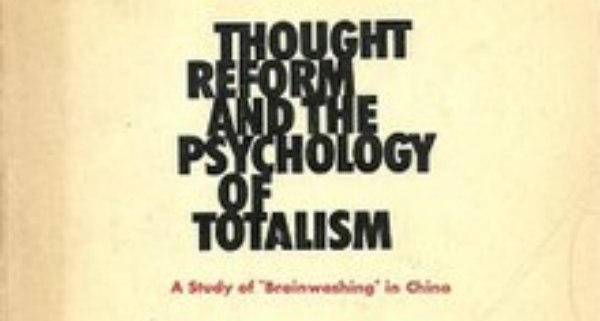The 60-years old link between prison camps and social media
It’s shorter than you may think.

There is a report, at the Consilience Project, about how social media enables undue influence. It’s long, probably longer than it could be to convey the same information, and some of its conclusions don’t look right to me. But I like how it summarizes a few things, in order to highlight the very important, if obvious reason why social media as it is today “enables undue influence”. Here is a summary in my own words of that summary, as an invitation to read the whole thing, and above all its sources.
The obvious difference before TV and social media, again
Radio, and later television, were definitive factors in how reality was understood by everyday citizens, just like the social media of today. But while TV allowed advertisers, politicians and other players to directly influence viewers, it did not allow viewers to directly influence other viewers.
Social media does not just completely remove that limit: its makes of its opposite the foundation of its power, because “the pressure of conformity in online environments where every user can “see” every other user in real time is strong”. In such environments, even those who “misbehave” and act like “trolls” conform to the norms of specific subcucultures (that is, they play their part to get approval from their peers, or to believe they have peers that will approve). It is this very feature that makes behavioral control, or “undue influence”, much easier to achieve, and much more powerful.
If you can’t ask or SEE the right questions, the answers don’t matter
Behavior control involves primarily the control of attention, with tight censorship of what can be read, watched, heard and discussed.
Before the Internet, this was possible only in physical contexts that allow physical controls - such as training centers or houses. However, social media frees behavior control from those limits, precisely because people come to it to create as many custom communities they can (think FB groups), thus giving social media many more venues for fine-tuned manipulation.
The techniques are always the same
An interesting part of that Consilience report is the assertion that the techniques used by social media are essentially the same practiced sixty years before in Korean and Chinese “re-education camps”, as described by R.J. Lifton in “Thought Reform and the Psychology of Totalism” (1961):

“In these spaces, thinking can be controlled through the use of psychocultural devices, such as “thought-terminating clichés, a tactic allegedly essential to the dynamics of oppressive and coercive groupthink in Maoist brainwashing re-education camps."
“Examples include phrases used specifically to stop further questioning of ideas. These are phrases that are popularized and repeated frequently in conversation, and made to order create out-groups and denigrated subgroups."
“Many of these are phrases that have emotional punch but make little logical sense. “The most far-reaching and complex of human problems are compressed into brief, highly reductive, definitive-sounding phrases, easily memorized and easily repeated."
“Social approval gained by repeating aloud the popular phrase stops thought and questioning in its tracks."
Isn’t this exactly what happens today on Facebook, Twitter, 4Chan… producing, in the worst cases, cults completely removed from reality like QAnon?
Also interesting is how social media are by design, much better than physical re-education camps for practicing those techniques.
Social Media is perfect for Undue Influence
Undue influence requires participation in a social ritual of using thought terminating clichés with others. The social pressure to say the right thing and conform to discourse patterns online is enabled by an incentive landscape based on “likes” and “views.”
Digital public spaces allow not only for the broadcast of thought-terminating clichés, but also for the binding of people into contexts in which they must gain social status through their use. Experiencing repeated social pressure and conversational closures based on the use of thought-terminating clichés creates psychological dissonance, and eventually numbing and downgraded cognitive capacity overall.
Coercive communication is not just part of the environment, as it was in the past. Coercive communication now constitutes the environment itself.
Who writes this, why, and how to help
I am Marco Fioretti, tech writer and aspiring polymath doing human-digital research and popularization.
I do it because YOUR civil rights and the quality of YOUR life depend every year more on how software is used AROUND you.
To this end, I have already shared more than a million words on this blog, without any paywall or user tracking, and am sharing the next million through a newsletter, also without any paywall.
The more direct support I get, the more I can continue to inform for free parents, teachers, decision makers, and everybody else who should know more stuff like this. You can support me with paid subscriptions to my newsletter, donations via PayPal (mfioretti@nexaima.net) or LiberaPay, or in any of the other ways listed here.THANKS for your support!